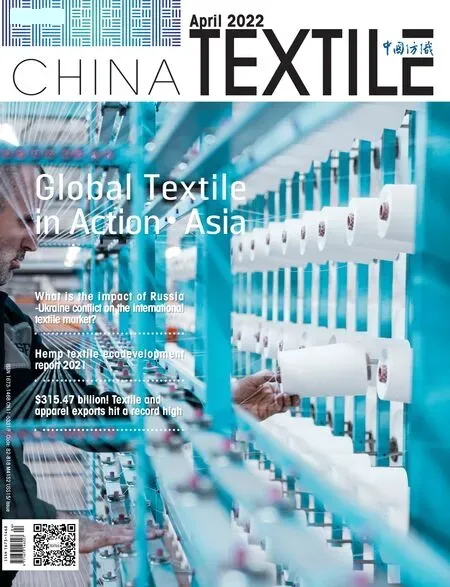Indonesia:Textile sector back on track
Robust economic growth and rising purchasing power make Indonesia -the world’s fourth most populated country -an attractive market for textiles and clothing.Indonesia is also one of the world’s top 10 textile and garment producers and exporters.According to statistics,Indonesia’s middle-class consumers will double to 140 million by 2030,with strong domestic demand.
Currently,99.2 percent of Indonesia’s raw cotton needs are met by imports,particularly from the US,Brazil,and Australia,which makes the country one of the world’s largest cotton importers.Moreover,nearly 80 percent of other raw materials such as dye,yarn,silk fabric still have to be imported,mainly from China.This makes the country’s upstream textile sector,particulatly yarn spinners,vulnerable to fluctuating global prices.
Trade data
Rising production costs have made Indonesia’s cotton yarn exports less competitive,particularly from Vietnam and Bangladesh.Textile exports from Vietnam and Bangladesh have grown by 1,028 percent and 699 percent respectively in the past 15 years,while Indonesia’s have grown by 82 percent,according to Indonesia’s spinning sector.
Indonesia’s textile sector contributes significantly to Indonesia’s GDP,exports and employment.Since the outbreak,this share has declined,with textiles contributing 1.21 percent of GDP in 2020 (1.26 percent in 2019) and exports contributing 6.12 percent (7.15 percent in 2019).According to data from the Central Statistics Agency(BPS),last year the textile sector grew -6.28 percent and the apparel sector -3.31 percent.
Chinese enterprises welcomed by Indonesian market
Both local and foreign companies are vying for market share.Rising costs are giving domestic producers a hard time as they try to fend off overseas competition,but technological modernization,improving labour skills,better infrastructure and not least the relatively low rupiah alter the picture in their favour.The need for Indonesian textile and clothing businesses to become more efficient spells opportunities for foreign companies that can offer machinery,knowhow and capital.
A major weakness of the Indonesian textile sector is that most of its manufacturers still use old,inefficient machinery and technology which further reduce their competitiveness.It is predicted that between USD 5 billion to USD 6 billion is required to rejuvenate existing machinery and equipment.China’s textile sector has a complete range of categories,advanced equipment and low price and maintenance costs,which are easy to be accepted by Indonesian enterprises.
Prospects of Indonesian textile sector
Despite steady domestic and export demand for Indonesia’s textile and garment products,Indonesia’s upstream textile sector is still plagued by a wide array of problems.These include high operating costs,operational inefficiencies,lack of competitiveness and poor marketing.Efforts have been made in recent years by the government to overhaul the sector by introducing a set of policies which are expected to help the sector compete on par with its more aggressive neighbours and competitors.
Currently,the Indonesian government has set a target to increase the export value of textiles and garments to USD 75 billion by 2030 to contribute 5 percent to global exports which will put the country among the top five global textile manufacturers.
- China Textile的其它文章
- TREND Cotton Incorporated
- Hot spandex market is steady this year?
- Update
- Briefing on economic operation of China’s garment industry from January to December 2021
- Denmark to host Global Fashion Summit in June 2022
- The economic operation of dyeing and printing industry shows resilience from January to December 2021

